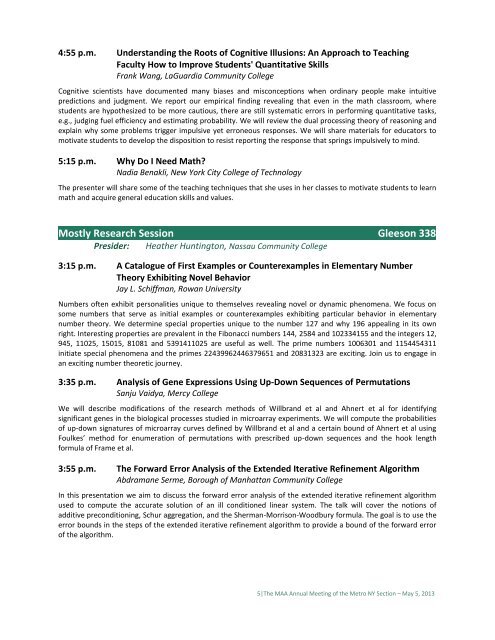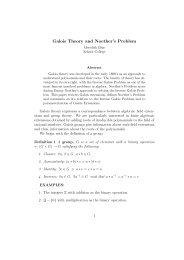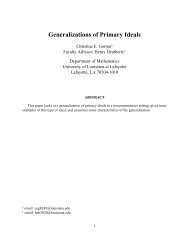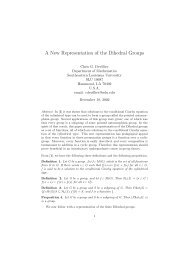Complete conference program (pdf) - MAA Sections - Mathematical ...
Complete conference program (pdf) - MAA Sections - Mathematical ...
Complete conference program (pdf) - MAA Sections - Mathematical ...
Create successful ePaper yourself
Turn your PDF publications into a flip-book with our unique Google optimized e-Paper software.
4:55 p.m. Understanding the Roots of Cognitive Illusions: An Approach to TeachingFaculty How to Improve Students' Quantitative SkillsFrank Wang, LaGuardia Community CollegeCognitive scientists have documented many biases and misconceptions when ordinary people make intuitivepredictions and judgment. We report our empirical finding revealing that even in the math classroom, wherestudents are hypothesized to be more cautious, there are still systematic errors in performing quantitative tasks,e.g., judging fuel efficiency and estimating probability. We will review the dual processing theory of reasoning andexplain why some problems trigger impulsive yet erroneous responses. We will share materials for educators tomotivate students to develop the disposition to resist reporting the response that springs impulsively to mind.5:15 p.m. Why Do I Need Math?Nadia Benakli, New York City College of TechnologyThe presenter will share some of the teaching techniques that she uses in her classes to motivate students to learnmath and acquire general education skills and values.Mostly Research Session Gleeson 338Presider: Heather Huntington, Nassau Community College3:15 p.m. A Catalogue of First Examples or Counterexamples in Elementary NumberTheory Exhibiting Novel BehaviorJay L. Schiffman, Rowan UniversityNumbers often exhibit personalities unique to themselves revealing novel or dynamic phenomena. We focus onsome numbers that serve as initial examples or counterexamples exhibiting particular behavior in elementarynumber theory. We determine special properties unique to the number 127 and why 196 appealing in its ownright. Interesting properties are prevalent in the Fibonacci numbers 144, 2584 and 102334155 and the integers 12,945, 11025, 15015, 81081 and 5391411025 are useful as well. The prime numbers 1006301 and 1154454311initiate special phenomena and the primes 22439962446379651 and 20831323 are exciting. Join us to engage inan exciting number theoretic journey.3:35 p.m. Analysis of Gene Expressions Using Up-Down Sequences of PermutationsSanju Vaidya, Mercy CollegeWe will describe modifications of the research methods of Willbrand et al and Ahnert et al for identifyingsignificant genes in the biological processes studied in microarray experiments. We will compute the probabilitiesof up-down signatures of microarray curves defined by Willbrand et al and a certain bound of Ahnert et al usingFoulkes’ method for enumeration of permutations with prescribed up-down sequences and the hook lengthformula of Frame et al.3:55 p.m. The Forward Error Analysis of the Extended Iterative Refinement AlgorithmAbdramane Serme, Borough of Manhattan Community CollegeIn this presentation we aim to discuss the forward error analysis of the extended iterative refinement algorithmused to compute the accurate solution of an ill conditioned linear system. The talk will cover the notions ofadditive preconditioning, Schur aggregation, and the Sherman-Morrison-Woodbury formula. The goal is to use theerror bounds in the steps of the extended iterative refinement algorithm to provide a bound of the forward errorof the algorithm.5|The <strong>MAA</strong> Annual Meeting of the Metro NY Section – May 5, 2013
















